If you’re a bow hunter, you need to know what kinds of food deer usually eat because this may increase your chances of having a successful hunt. Whenever I set up my hunting stand or deer blind, I first scout the hunting grounds and check which spots have a bountiful food source that deer love.
It’s not always easy to identify which foods will attract a deer’s attention. You need to do your research and know which plants and forage grow on which part of the year.
Are you wondering what do deer eat? Today I will share a quick and easy guide to help you get started.
Natural Foods versus Food Plots
Wild deer can usually survive on what they find in the forest or their natural habitat. Depending on the season, they can eat grass, soft twigs and leaves, nuts, and whatever fruit their tongues can reach. Deer also like eating mushrooms and even wild flowers!
To help nature replenish its sources and supply deer with more food, some deer managers and landowners revegetate forests and hunting areas, meaning they plant grasses, shrubs, trees, and other naturally growing plants.
Some deer managers and hunting ground owners also use food plotting to feed deer in their lots. As explained by New York Antler Outdoors, food plotting consists of planting legumes and forage grasses that have higher nutritional value than what is found in a natural setting. Doing this attracts more animals and therefore increases the potential harvest in one’s hunting grounds.
What Do Deer Eat?
So what do deer eat, whether in their natural habitat or in food plots? Below is a basic list of what deer love to eat and when they usually eat them:
1. Nuts
North American Whitetail claims that deer prefer to eat nuts the most. Chestnuts are usually their favorite, but they also eat pecans, hickory nuts, and a wide variety of other nuts. I’ve noticed that chestnuts, in particular, are popular among deer, most likely because they are rich in carbohydrates and protein.
Deer also like eating acorns, especially those from red oak and white oak trees. Acorns are rich in carbohydrates and essential fats that deer need to stay active. Most deer prefer chestnuts over acorns though because acorns may sometimes cause indigestion.
Deer often need to eat lots of nuts during autumn because they need more carbohydrates in their bodies. Nuts allow them to stay more active in cooler weather and keeps their internal temperature higher, allowing them to stay warmer for longer periods.
2. Twigs and Leaves
Deer Eating from a Tree
Available all year round are shrubs and young trees with soft leaves and twigs that deer can munch on. These also include fallen leaves and twigs, which the deer can simply eat off the forest floor.
While these may not be a deer’s favorite meal, they provide ample nutrition especially during late autumn and winter, where other food sources become scarce.
3. Weeds and Grass
Deer Grazing in a Field on Early Spring Morning
Grass shoots and certain weeds are highly digestible and are rich in antioxidants and other minerals that deer need. However, they cannot survive winter temperatures and would only start to sprout again in early spring.
Deer take advantage of this and eat them in mouthfuls in order to replenish the nutrients and regain the weight they lost during winter. Eating young grass also supplies them with the energy they need to survive another change in season.
4. Flowers and Perennials
Deer Eating Firebloom
Deer love wild flowers, such as roses and dandelions. It is not uncommon to see deer going out on fields and meadows covered in wild blooms to forage there. They also love poison ivy and are not affected by the toxins that irritate a human’s skin.
They also like eating non-wood perennials like white clover and alfalfa. Clover usually comes out in early spring and last until summer, and then grows back in autumn until the beginning of winter. Alfalfa, on the other hand, can usually survive winter, making it a vital food source for deer.
5. Fruits
Female Deer Eating Berries
Deer need carbohydrates and sugar to sustain their activities throughout the day, and fruits are a rich and delicious source of both. Deer love munching on apples, grapes, plums, persimmons, and a variety of berries like mulberry and blackberries.
Many of the fruits that deer eat grow in the wild, but it is not impossible for deer to approach the edge of orchards to eat fruit on the ground, as long as they feel that they’re safe in the area.
While deer may eat fruits all year round, they usually rely on this food source to provide them the extra energy they need during autumn. Sugars and carbohydrates from fruits also help deer store fat for the long winter ahead.
6. Mushrooms
It may come as a surprise to some, but deer actually love to add mushrooms in their diet. When you spot a deer near a fallen log or tree stump, there’s a likely chance that it is eating some species of mushroom.
Because they are immune to mushrooms that may be poisonous to humans, deer don’t have to be that careful when eating mushrooms they find in the forest floor.
Deer don’t just like how mushrooms taste, they also need it because it is a primary source of phosphorus. Phosphorus helps deer grow strong and healthy antlers, and does (female deer) need it to provide nutrition to their fawns.
Conclusion
Knowing what deer eat at which time of year not only help increase your chances of catching game, it may also allow you to enjoy your hunting experience better.
Take the time to learn which plants and forage are available in your hunting region and consider this when looking for a spot to set up your hunting stand or blind.
Did this list help? Do you know what other foods deer love to eat? Share them in the comments’ section below. I’d love to hear them!

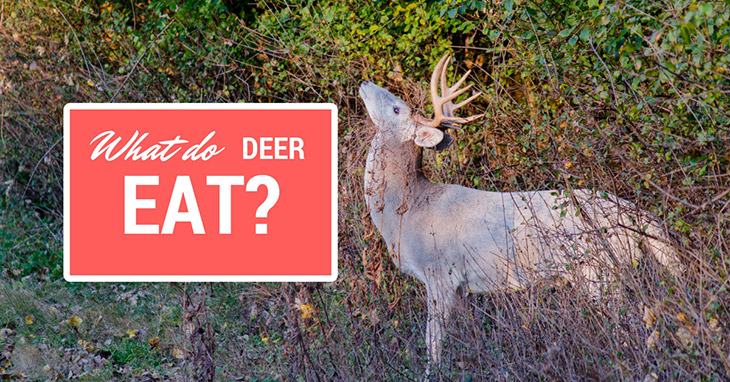
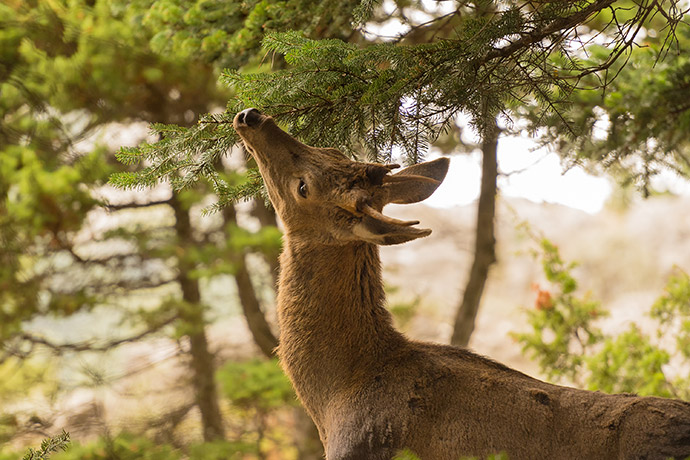
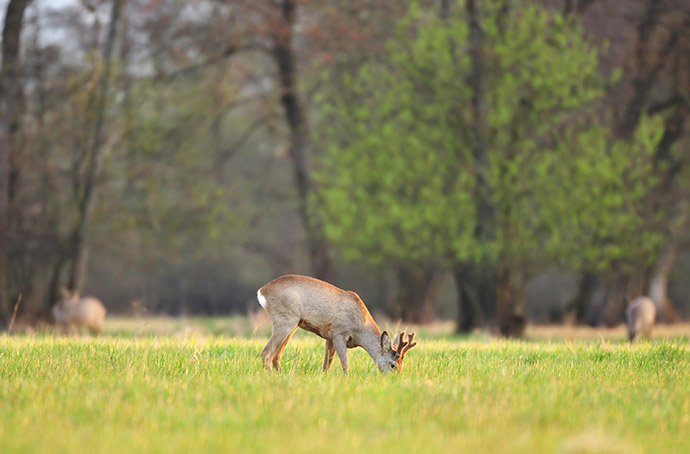
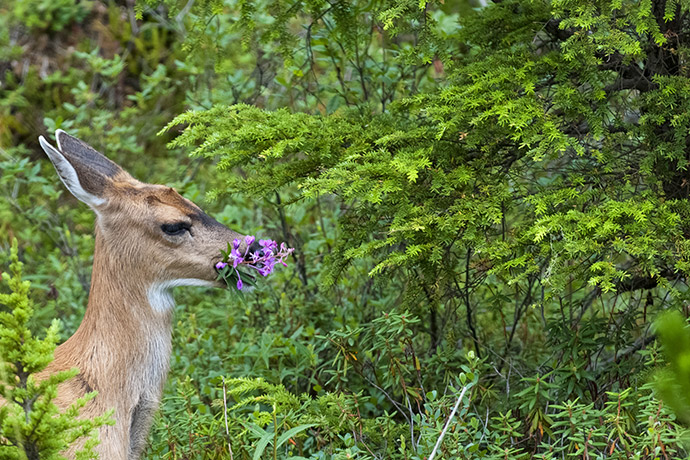
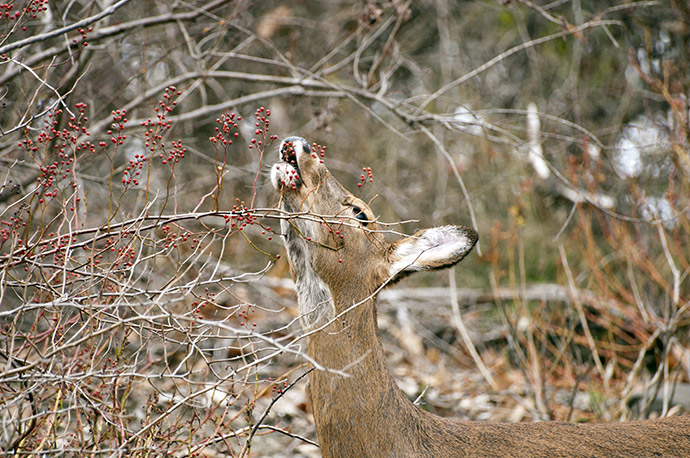
3 Comments. Leave new
[…] contain that can make deer bigger and healthier. Also, no part of the crop will go to waste because deer eat both the leaves on top, as well as the turnips itself that are buried in the […]
[…] done your pre-season scouting properly, you should have an idea which areas have an abundance of whitetails’ food sources. Because whitetails would most likely be focused on stocking up on calories in preparation for the […]
[…] In order to store fat, a deer has to change its diet from one that is rich in protein to one that is rich in carbohydrates and essential fats. To do this, it usually focuses on carbohydrate-rich food such as nuts, fruits, and non-wood perennials. […]